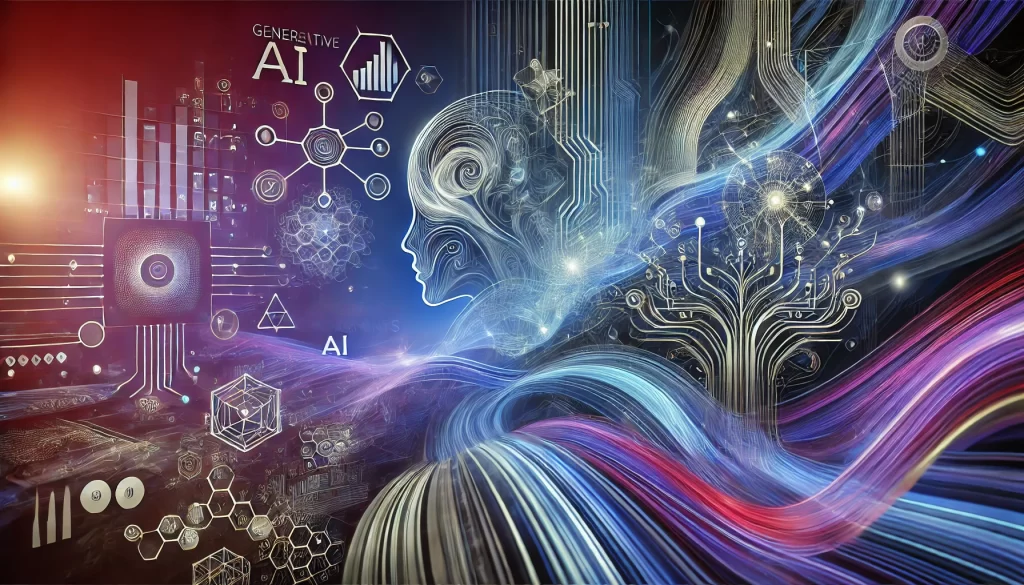
Generative AI is a fairly novel technology that has rapidly gained traction across different industries in the last few years. With applications in content creation, animations video gaming, and even personalized recommendations, generative AI is making great progress that translates into noticeable improvements in many industries. In this blog, we will look at the latest developments in the field of Generative AI, the changes that they will bring, and the way they will alter technology and art in the future.
Defining Generative AI
Even before discussing the latest breakthroughs, it is imperative to first grasp what Generative AI is. Generative AI refers to a type of artificial intelligence that can create new content through some sort of existing data. This begs the question of defining a task of a traditional AI focusing on classification and prediction approach. More advanced Generative AI incorporates deep learning more specifically Generative Adversarial Networks (GANs) and Transformer models that produce new data based on the training data set.
Enhanced Natural Language Processing
Recent advancements in natural language processing (NLP) have revolutionized the way machines understand and generate human language. Models like OpenAI’s GPT-3 and its successors have demonstrated unprecedented capabilities in generating coherent and contextually relevant text. These models can engage in conversations, write essays, and even generate poetry, making them valuable tools for content creators, marketers, and businesses looking to automate communication.
Moreover, fine-tuning techniques have enabled organizations to customize these models for specific applications, improving their performance in niche areas. For example, businesses can develop chatbots powered by generative AI that provide personalized customer support, significantly enhancing user experience.
Breakthroughs in Image Generation
Image generation has seen remarkable progress, particularly through GANs. Notable advancements include the ability to create hyper-realistic images that are virtually indistinguishable from real photographs. Models like StyleGAN2 have pushed the boundaries of image synthesis, allowing users to generate high-quality images by manipulating various attributes such as style, pose, and expression.
Additionally, advancements in diffusion models, such as DALL-E and MidJourney, have enabled users to create images from textual descriptions, bridging the gap between language and visual content. These innovations have significant implications for industries like fashion, advertising, and gaming, where unique and visually appealing content is crucial for success.
Music and Audio Generation
Generative AI is also making waves in the music industry. Models like OpenAI’s MuseNet and Jukedeck can compose original music across different genres and styles. These models analyze vast datasets of musical compositions, learning patterns in melody, harmony, and rhythm to create new pieces that resonate with listeners.
Furthermore, advancements in voice synthesis, powered by generative AI, have enabled the creation of realistic and expressive voiceovers. This technology is being utilized in applications such as audiobooks, gaming, and virtual assistants, enhancing the overall auditory experience.
Video Content Creation
The ability to generate video content using AI is one of the most exciting advancements in generative AI. Recent developments have led to the creation of models capable of generating realistic video sequences from scratch or enhancing existing footage. These models can analyze video frames, understand motion dynamics, and generate new scenes that are coherent and visually appealing.
For instance, research from companies like NVIDIA has resulted in algorithms that can synthesize videos based on text prompts, enabling users to create engaging video content with minimal effort. This technology has implications for content creators, marketers, and educators, offering new ways to engage audiences through dynamic visual storytelling.
Personalization and User-Centric AI
Generative AI is increasingly being leveraged to create personalized experiences for users. By analyzing user data, preferences, and behaviors, generative AI models can generate tailored content that resonates with individual users. This approach is particularly relevant in marketing, where personalized advertisements and recommendations can significantly improve engagement and conversion rates.
For example, streaming platforms utilize generative AI to create customized playlists based on users’ listening habits, while e-commerce sites can recommend products tailored to individual preferences. This level of personalization not only enhances user satisfaction but also fosters brand loyalty.
Ethical Considerations and Challenges
As generative AI continues to advance, ethical considerations and challenges arise. Issues such as misinformation, deepfakes, and copyright infringement are significant concerns that necessitate careful regulation and oversight. The potential misuse of generative AI for malicious purposes highlights the need for responsible development and deployment.
Organizations and researchers are increasingly focusing on creating frameworks and guidelines to ensure that generative AI is used ethically and responsibly. This includes developing techniques to detect and mitigate harmful content generated by AI systems, promoting transparency, and encouraging collaboration between technologists and policymakers.
